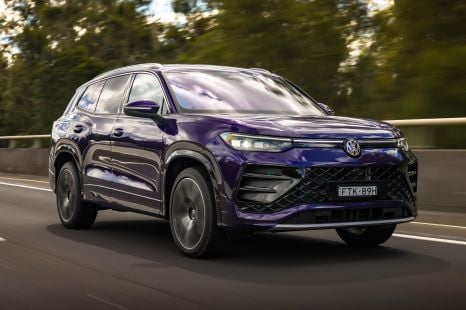

Damion Smy
2026 Volkswagen Tayron review
1 Day Ago
The MG HS will add a plug-in 'Super Hybrid' drivetrain in September. Based on a local drive of a pre-production car, it's very promising.
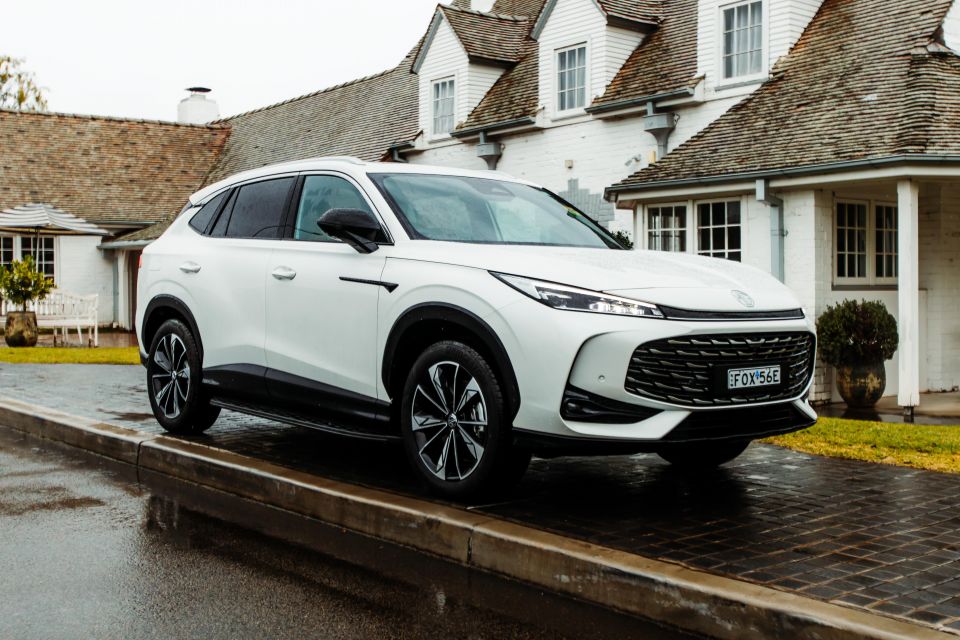


Quickly see how this car stacks up against its competition. Select any benchmark to see more details.
Where expert car reviews meet expert car buying – CarExpert gives you trusted advice, personalised service and real savings on your next new car.
I know what you’re thinking – ‘what on Earth is a Super Hybrid?!’
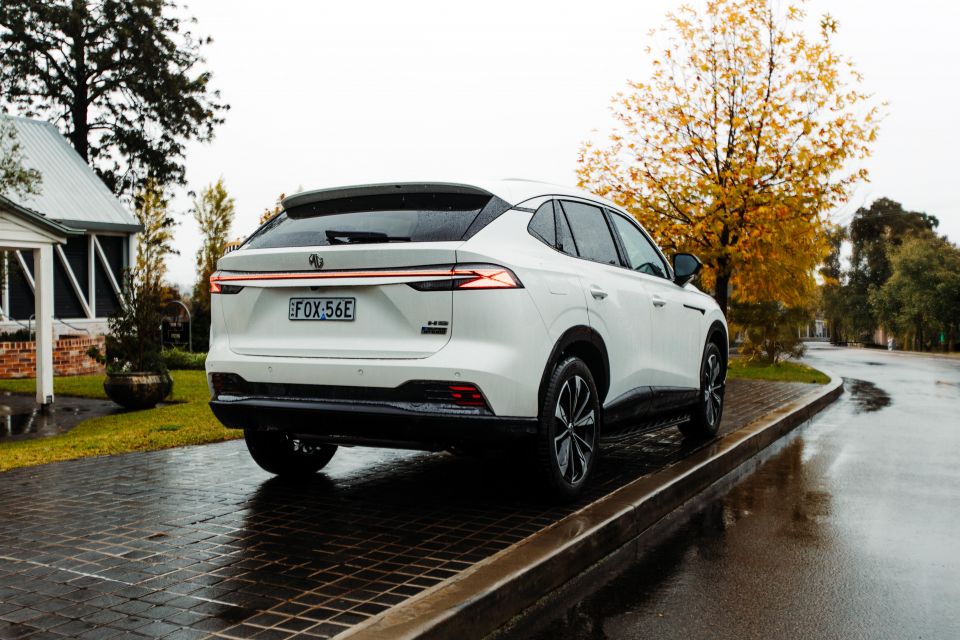
Automotive naming conventions and technical terminology continues to become more diverse and no doubt confusing for the average consumer, but China’s MG is hoping to make plug-in hybrid (PHEV) ownership simpler.
Due to arrive around September alongside the non-plug-in HS Hybrid+, the Super Hybrid quotes a big 120km of electric-only driving range on the WLTP cycle, and a combined fuel claim of just 0.42L/100km.
MG Australia has coined the term ‘Super Hybrid’ to stick on its new PHEV models that have been tailored for the Australian market, starting with the HS mid-size SUV.
While on paper the hardware and general specification of the 2025 MG HS Super Hybrid appears to align with the HS Plug-in Hybrid offered in the UK, MG’s local division has tailored the drivetrain’s software to act more like a conventional hybrid with a long-range battery, rather than prioritising EV mode like most PHEVs.
WATCH: Paul’s video review of the 2025 MG HS 1.5T
The reason? MG Australia says it hopes local buyers will find this kind of PHEV easier, given it figures out the most efficient way to draw upon its dual-power system and achieve hyper-miler combined driving range of over 1000km on a full charge and tank of fuel.
We joined a pre-production road drive in Sydney to see if MG Australia’s fettled plug-in hybrid SUV has what it takes to duke it out with the likes of the top-selling BYD Sealion 6 and Mitsubishi Outlander Plug-in Hybrid EV.
Pricing and specifications for the new MG HS Super Hybrid hasn’t been announced, but the brand’s local division has indicated the plug-in HS will be available across multiple trim levels.

We’re also yet to hear details on pricing for the HS Hybrid+, which will sit between the Super Hybrid and the standard turbocharged petrol range.
Currently, the HS 1.5T starts from a pretty sharp $33,990 drive-away for the base Vibe, with the flagship Essence topping out at $40,990 drive-away.
The previous-generation HS Plus EV was Australia’s most affordable plug-in hybrid, and for a period of time was also the most popular. It commanded a circa-$14,000 premium over the equivalent petrol HS.
CarExpert is anticipating the HS Super Hybrid will be available in mid-range Excite and flagship Essence grades, likely commanding around a $10,000 upcharge over the equivalent HS 1.5T and around $5000 more than the Hybrid+.
To see how the MG HS lines up against the competition, check out our comparison tool
Buy your new car without the stress. It's fast, simple and completely free.

Great service from Travis and team, second time I have used this business would not hesitate to recommend them to anyone
Craig C.
Purchased a Ford Ranger in Sunshine Coast, QLD
CarExpert helped Craig save $7,224 on his Ford Ranger, now let us save you on your next new car.
Get your BEST priceThe pre-production vehicles were a mix of specifications largely aligned with the petrol-powered Excite and Essence grades. Nothing is really new here.
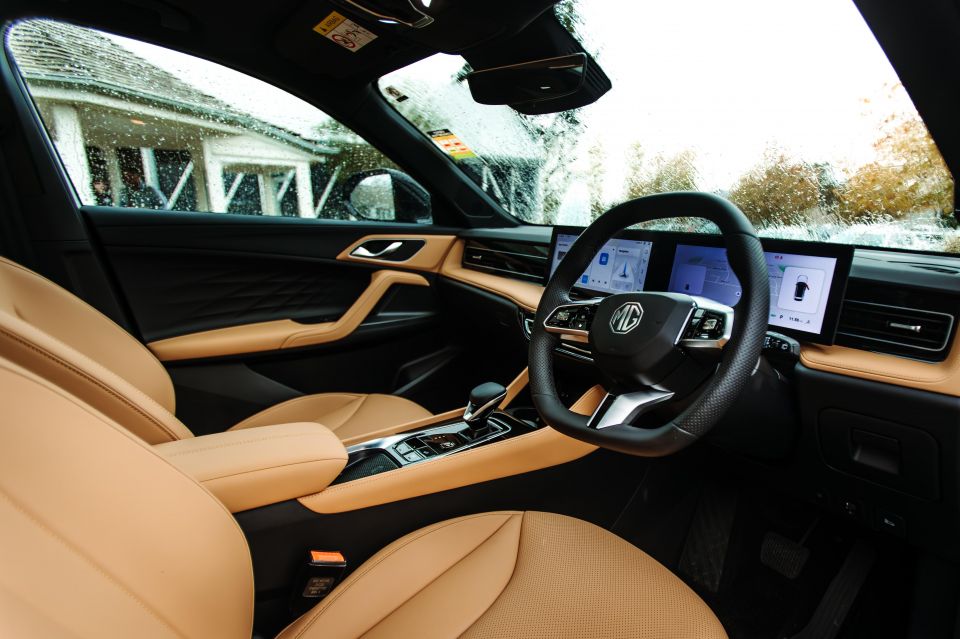
Big screens, minimal physical switchgear and a generally upmarket presentation headline the cabin. MG’s latest generation of products are showing the Chinese brand’s massive gains in building solid, premium-feeling vehicles.
Super Hybrid-specific features are limited to special graphics and readouts in the digital instrument cluster and infotainment system.
The latter is also where you toggle things like HEV/EV modes and regenerative braking intensity, unless you set one of the two ‘star’ configurable shortcut buttons to flick through settings on the fly.
I will admit the touchscreen-heavy method to toggle settings can get a little convoluted and fiddly if you’re also using Apple CarPlay and Android Auto – though there are hard shortcut buttons for select functions below the screen.
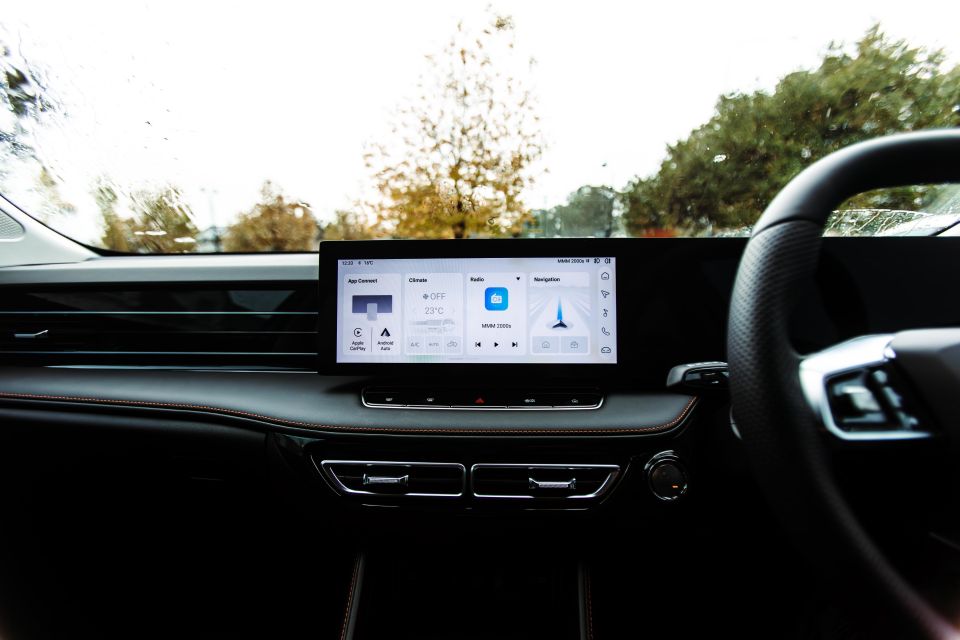
MG says the HS Super Hybrid will arrive with wireless Apple CarPlay and Android Auto, though the prototypes on test only had a wired connection like the current petrol range.
The digital instrument cluster is clean though doesn’t offer a whole lot in terms of customisation apart from three distinct views, with the most detailed being the navigation map view.
It’s a shame there’s not more sophisticated graphics and menus beyond the switchable left and right widgets – I’d prefer nicer dial-type readouts that take up more of the display real estate.
Ahead of the driver there’s also a colour head-up display that projects onto the windscreen, showing vehicle speed, assistance systems as well as turn-by-turn navigation prompts where applicable.

Pictured is the interior of an Essence-spec vehicle with the optional tan leather-look upholstery, which may not be to all tastes but adds a nice pop of contrasting colour and texture to the cabin.
Being just about identical to the petrol-powered MG HS inside, there’s good space in the second row for lanky teenagers and above average-sized adults, though it doesn’t feel quite as big as something like an Outlander PHEV.
MG hasn’t fully detailed the interior dimensions of the HS Super Hybrid, but it appears the PHEV retains its 507-litre boot from the petrol model according to UK specifications, expanding to 1484 litres with the rear bench folded.
The petrol HS gets a space saver spare wheel in Australia, though it’s unclear whether the PHEV will get the same or a tyre repair kit – for reference, the big hybrid battery is placed in the floor plan like an EV, rather than under the boot.
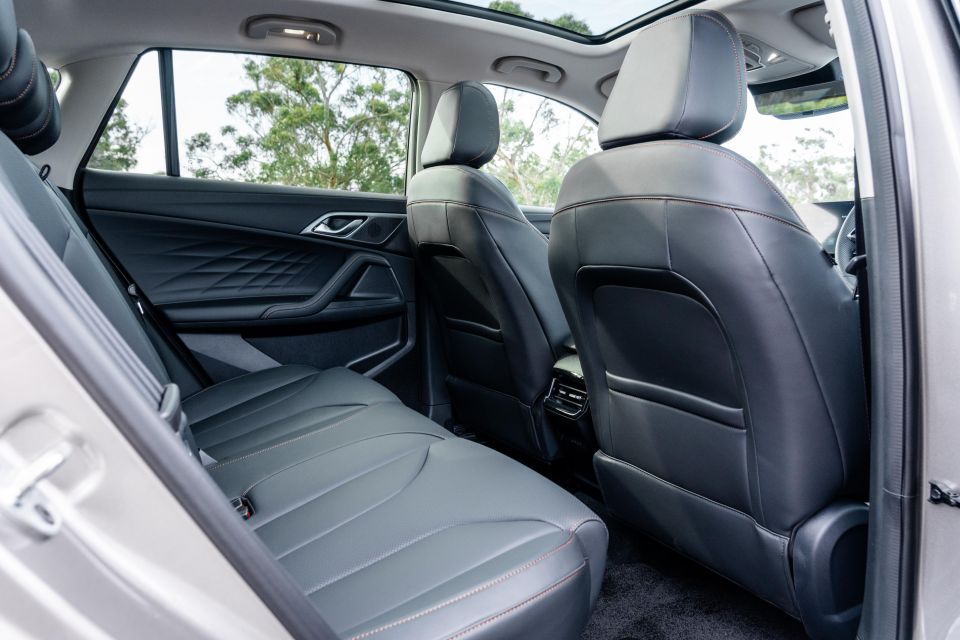
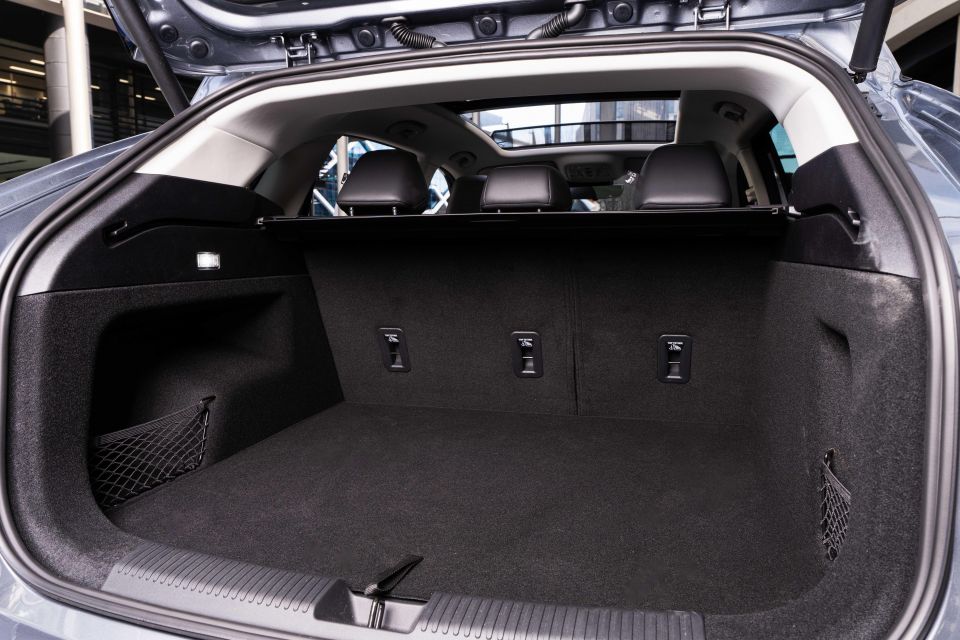
| Dimensions | MG HS |
|---|---|
| Length | 4655mm |
| Width | 1890mm |
| Height | 1655mm |
| Wheelbase | 2765mm |
| Boot capacity | 507-1484 litres – VDA |
To see how the MG HS lines up against the competition, check out our comparison tool
The HS Super Hybrid draws upon a 1.5-litre turbocharged PHEV system largely shared with the equivalent HS Plug-in Hybrid sold in the UK – meaning the larger 24.7kWh lithium iron phosphate (LFP) battery pack.
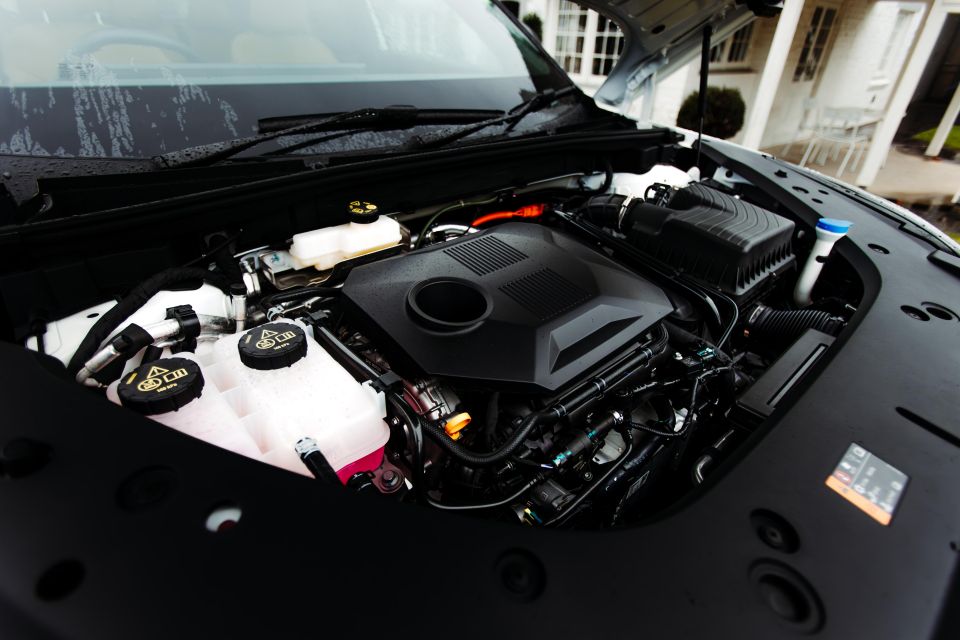
| Specifications | MG HS Super Hybrid |
|---|---|
| Engine | 1.5L 4cyl turbo-petrol PHEV |
| Engine outputs | 105kW + 230Nm |
| Electric motor outputs | 135kW + 340Nm |
| System outputs | 220kW + 350Nm |
| Battery | 24.7kWh LFP, 384V |
| Transmission | 2-speed ratio transmission |
| Drive type | Front-wheel drive |
| 0-100km/h (claimed) | 6.8 seconds |
| Fuel economy (claimed) | 0.42L/100km – Full battery ~4.5-5.0L/100km – Depleted battery |
| Fuel economy (as tested) | 2.4-2.9L/100km |
| Electric driving range | 120km – WLTP |
| AC charge capacity | 6.6kW |
| Fuel tank capacity | 55 litres |
| Fuel requirement | 95 octane premium unleaded |
MG says the “integrated two-speed ratio transmission” simulates a nine-speed automatic, shifting between the turbocharged petrol engine and the “G3” water-cooled traction motor. There’s also a new 61kW motor-generator.
Unlike previous-generation PHEVs, which would just about fully deplete the battery pack to maximise EV range, the MG HS Super Hybrid will retain around 20 per cent state of charge (SoC) when showing 0km of usable EV range to continue operating efficiently as a conventional hybrid – hence the 4.5-5.0L/100km claim with a depleted battery.
With a fully charged battery and the 55-litre fuel tank filled (with 95 RON premium juice), MG reckons you’ll get over 1000km of total driving range – meaning the 875km trip from Melbourne to Sydney should be no stress at all.
The MG HS Hybrid+, meanwhile, is powered by a 165kW/340Nm petrol-electric hybrid system, good for combined fuel economy of 5.2L/100km. For reference, the top-selling Toyota RAV4 Hybrid uses a claimed 4.7 litres per 100km.
Like the smaller ZS Hybrid+, the HS Hybrid+ features a much smaller 1.83kWh battery pack which is charged solely by the engine, rather than offering the ability to be plugged in like in the Super Hybrid.
To see how the MG HS lines up against the competition, check out our comparison tool
The previous-generation HS Plus EV wasn’t really my favourite PHEV to drive due to its at times disjointed drivetrain and average dynamics – this new one is a revelation by comparison.

Our drive program started at MG Australia’s technical training centre in Alexandria, Sydney; and took us out to Camden south-west of the NSW capital (and then back) – all up, this trip was over 200 kilometres.
The brand’s team ensured we got a mix of inner-city and suburban streets, highways as well as 110km/h open freeway to really test the Super Hybrid system’s adaptability to Australia’s wide range of roads and conditions.
Now let’s explain the Australian take on MG’s PHEV system before we move on as simply as we can. Essentially, MG Australia’s team has tuned the Super Hybrid to default to HEV or ‘Hybrid’ mode unlike the UK version, though it’ll drive as an EV below 80km/h which is most daily commuting scenarios for most people.
The HS Super Hybrid will draw upon its turbocharged petrol engine when maximum acceleration is required via throttle inputs, or when the vehicle exceeds 80km/h such as on the freeway – when the ICE unit will be operating at its most efficient.
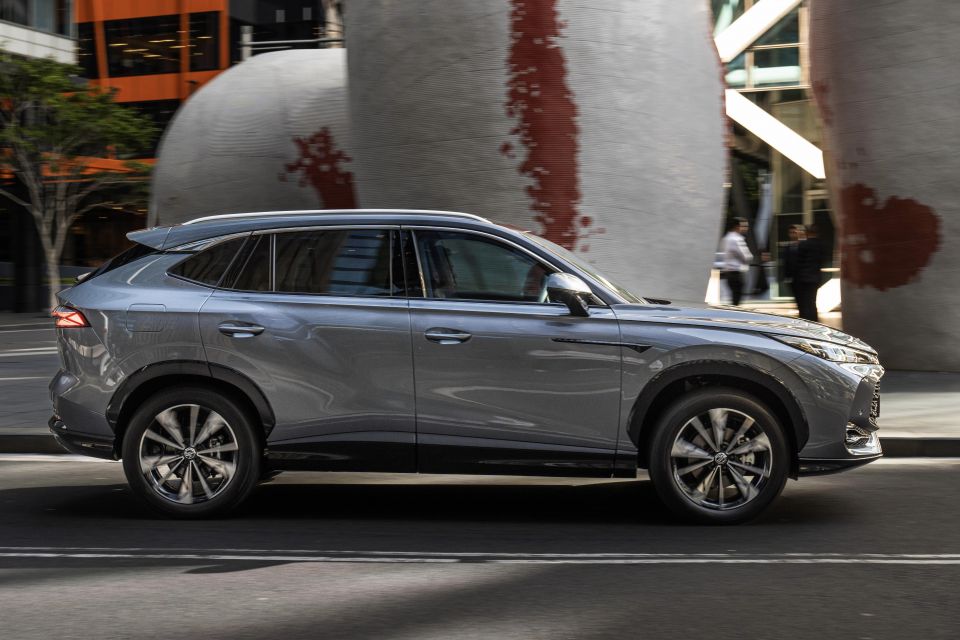
Driving out of Alexandria and towards the freeway, the HS very happily putted along using solely the 135kW/340Nm electric traction motor. It has plenty of shove for these scenarios, and is more than capable of getting the HS up to highway speeds if you lock it in EV mode.
We just left the car in HEV mode to really test out MG’s claims, and from the get-go we were quite impressed. The cluster showed over 120km of electric range on a full charge, and was dipping under 20kWh/100km in stop-start driving with petrol use at all.
Through Sydney’s network of tunnels the HS Super Hybrid sat nicely at 90km/h shuffling between power sources, which saw the fuel consumption readout slowly climb to about 2-3L/100km. The HS’s cabin is so well insulated that you don’t even know when the engine is running or taking over – the transition between engines is seamless.
Overall it’s a very calm place to spend time, save for a bit of tyre noise over rougher surfaces. You can feel the added weight of the large battery pack, but it more or less lends a more solid and secure road feel rather than feeling lumpy and cumbersome.
If anything it rides a little harder than the petrol HS, as the suspension has been tuned to deal with the added weight of the electrified componentry.
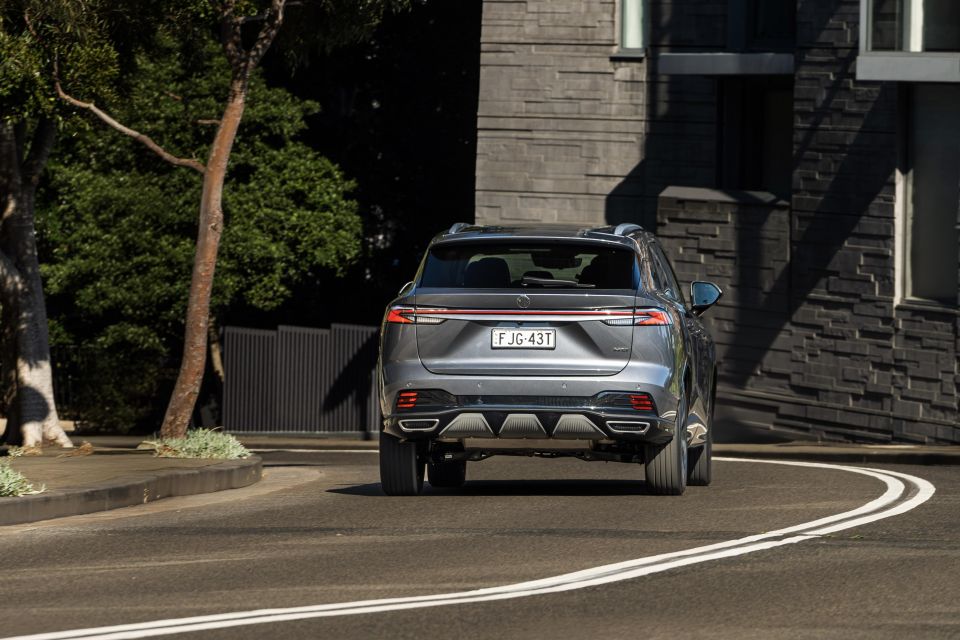
Like the standard HS, the Super Hybrid offers very neutral and predictable handling and response to driver inputs. The steering is light, and the brake feel is generally quite progressive even as you shift between regen and mechanical braking.
It can feel a bit top-heavy if you take a corner too quickly, but there’s good grip from the Bridgestone Alenza tyres fitted to the pre-production prototypes riding on larger 19-inch alloy wheels, and this was further evident on our windy second drive leg through a very wet and gloomy national park.
In fact, the weather was nothing short of horrible all day, with bouts of torrential rain and patches of flash-flooding along our two drive legs. Thankfully, the HS Super Hybrid wasn’t phased despite being only front-wheel drive, only spinning its wheels when asked to do a full-throttle sprint up a freeway on-ramp to test its acceleration – spoiler alert, it’s pretty darn quick.
Performance in general is pretty good regardless of whether you’re using the e-motor, petrol engine, or a combination of both. The integrated two-speed transmission doesn’t act like a CVT, nor can you really feel its nine simulated ‘steps’ on the move – regardless, it’s a very smooth drivetrain that is quite efficient.
After driving to and from Camden on a mix of roads, the HS Super Hybrid was still showing 5km of usable electric range and an indicated fuel consumption of 2.4L/100km. Indicated total driving range was around 900km… not bad.
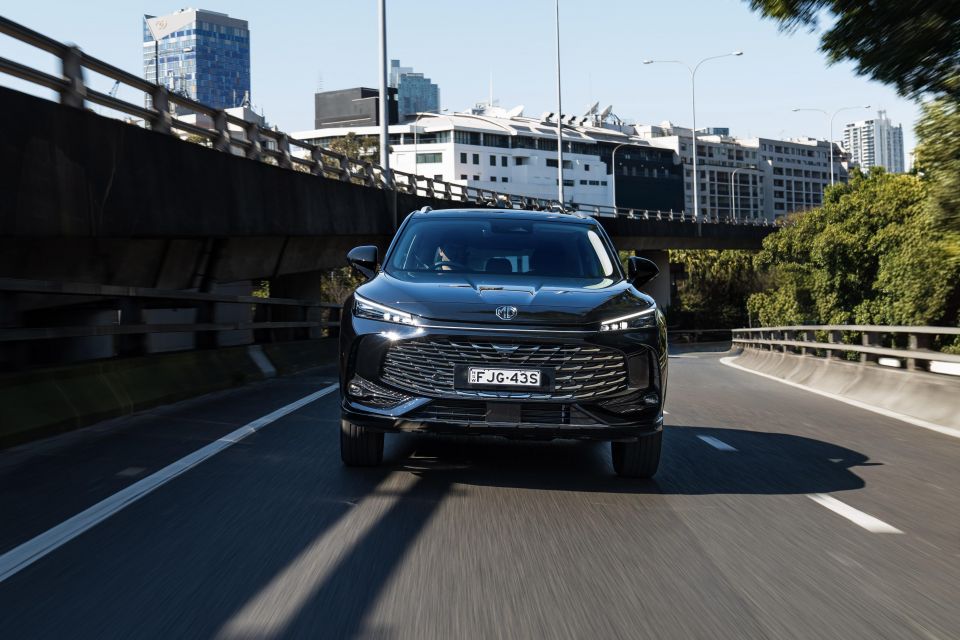
A large portion of the return leg – after the wet and wild ‘nasho’ run – was spent on high-speed freeway heading back to MG’s Alexandria base, where the plug-in SUV very happily sat at 110km/h with its MG Pilot assistance tech doing the heavy lifting when weather permitted.
While I’ve found a lot of Chinese-branded cars are often twitchy and overzealous with their driver assistance execution, the HS did a pretty good job of keeping on the straight and narrow without wrestling control of the vehicle out of my hands.
The only thing that needed to be switched off was the annoying overspeed audio alerts which chime when the speed limit changes and also when the indicated speed exceeds said signed limit – much like vehicles from Hyundai and Kia.
It’s otherwise pretty intuitive and user friendly, centring the HS within its lane and keeping a safe distance from the vehicle in front. On a couple of occasions, however, the array of cameras and sensors would lose track of lane markings in artificially lit tunnels.
To see how the MG HS lines up against the competition, check out our comparison tool
While MG Australia hasn’t confirmed specifications for the Super Hybrid range, we can use the standard petrol HS range as a guide.
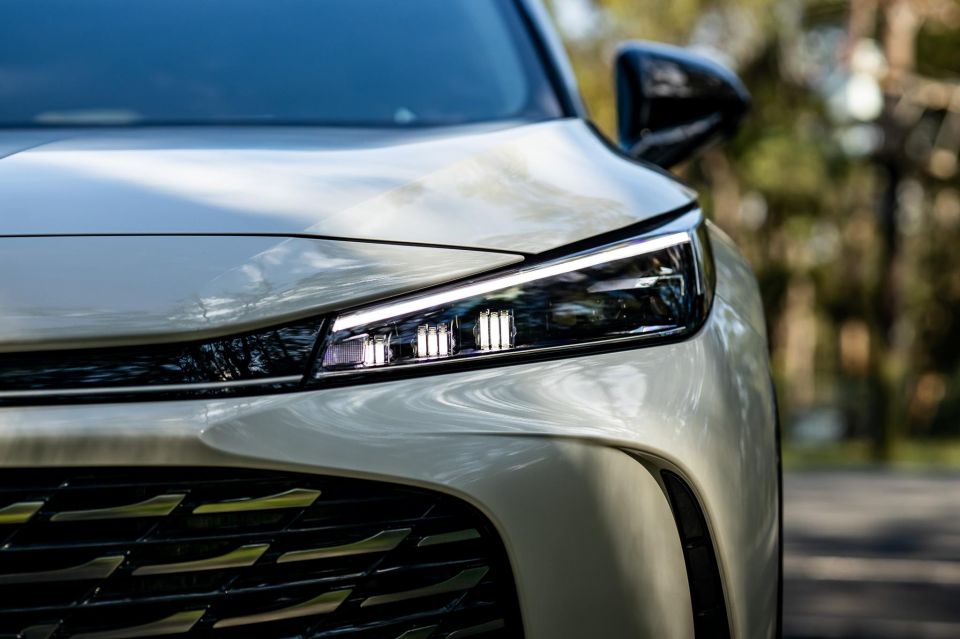
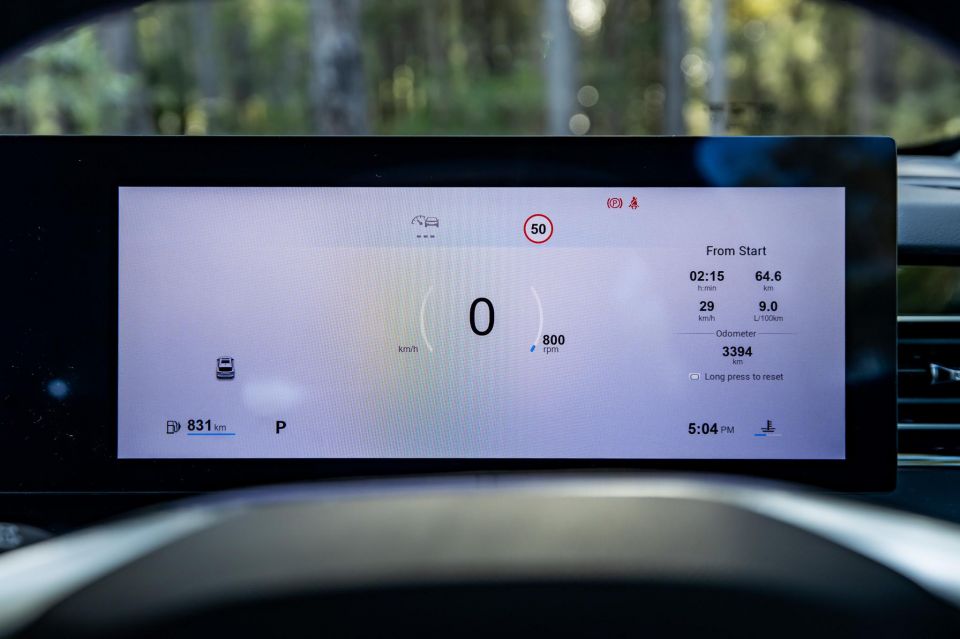
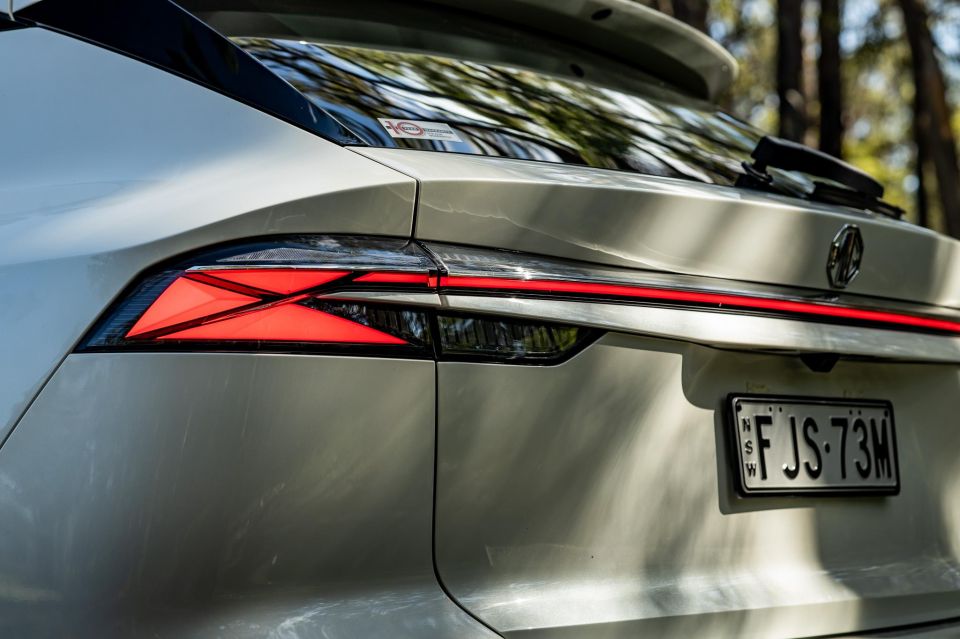
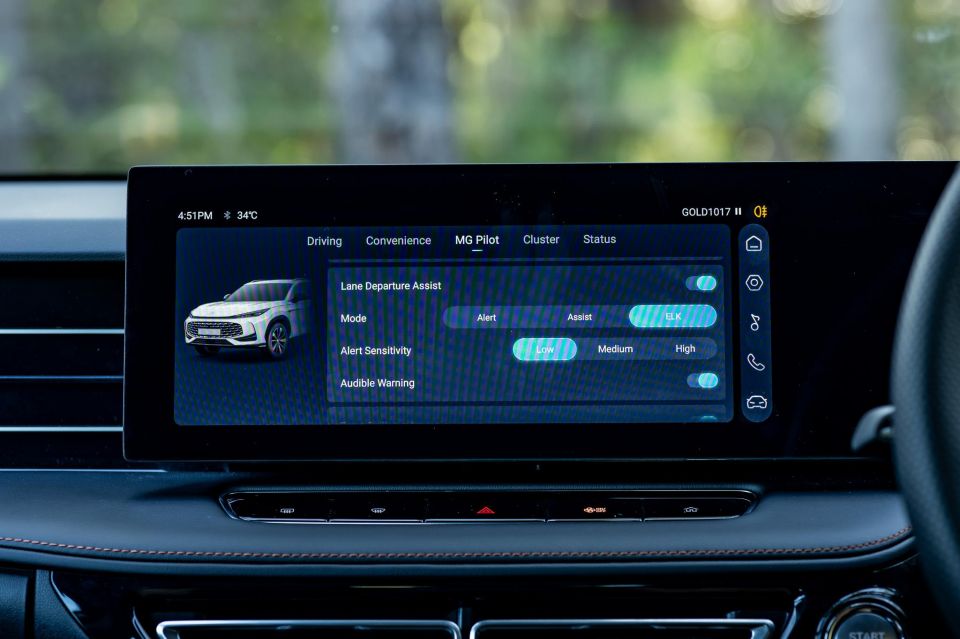
2025 MG HS Vibe equipment highlights:
HS Excite adds:
HS Essence adds:
To see how the MG HS lines up against the competition, check out our comparison tool
The new MG HS wears a 2024-stamped five-star ANCAP safety rating based on Euro NCAP tests – this rating currently only covers petrol models, not the hybrids.
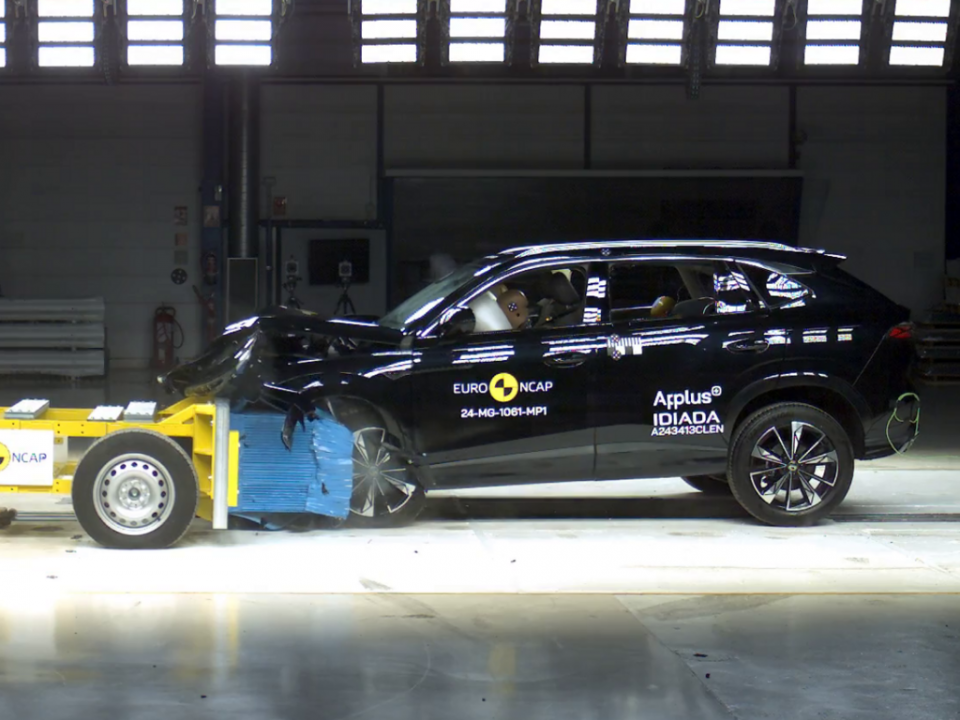
Where expert car reviews meet expert car buying – CarExpert gives you trusted advice, personalised service and real savings on your next new car.
| Category | MG HS |
|---|---|
| Adult occupant protection | 90 per cent |
| Child occupant protection | 87 per cent |
| Vulnerable road user protection | 83 per cent |
| Safety assist | 74 per cent |
Standard safety features on all MG HS variants include:
Excite and above add:
To see how the MG HS lines up against the competition, check out our comparison tool
MG Australia covers its range with a very long 10 year, 250,000km warranty (including EV and hybrid batteries) with up to 10 years of roadside assistance provided you service within the brand’s dealer network.
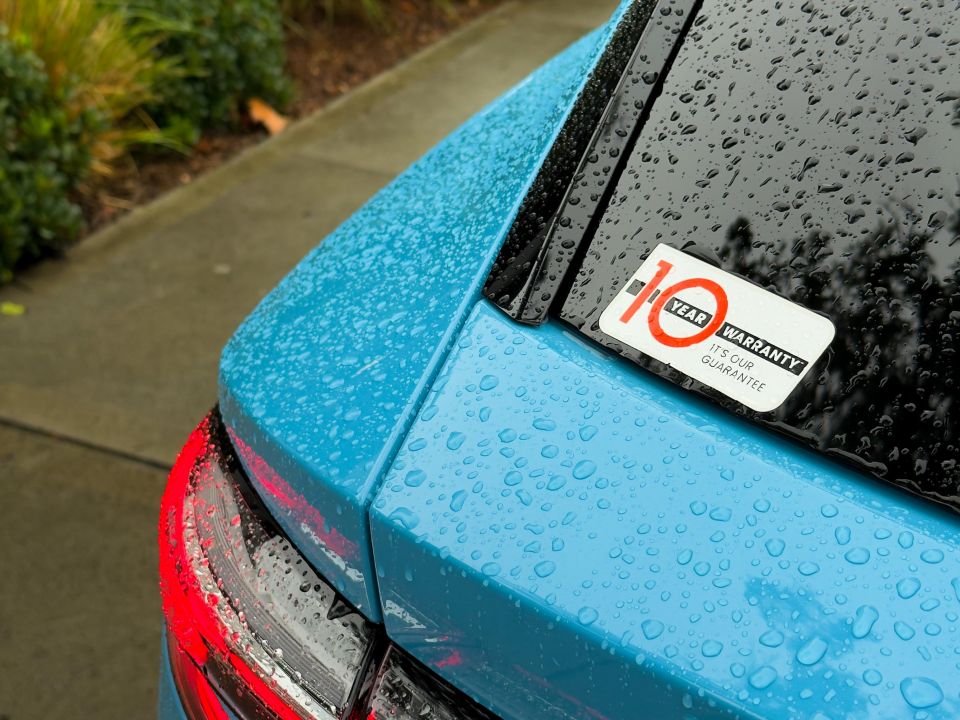
| Warranty and Servicing | MG HS 1.5T |
|---|---|
| Warranty | 10 years or 250,000 kilometres |
| Roadside assistance | 10 years – service-activated |
| Capped-price servicing | 10 years or 150,000 kilometres |
| Service intervals | TBC |
Given the HS Super Hybrid is still some months away from going on sale in Australia, we’re still waiting on full details around service pricing. Stay tuned for an update in the lead-up to its market arrival.
To see how the MG HS lines up against the competition, check out our comparison tool
Buy your new car without the stress. It's fast, simple and completely free.

Great service from Travis and team, second time I have used this business would not hesitate to recommend them to anyone
Craig C.
Purchased a Ford Ranger in Sunshine Coast, QLD
CarExpert helped Craig save $7,224 on his Ford Ranger, now let us save you on your next new car.
Get your BEST priceBased purely on driving these pre-production vehicles, there’s a lot of promise from MG’s new mid-size plug-in hybrid SUV – it’s not just ‘good for a Chinese car’, it’s very good full stop.
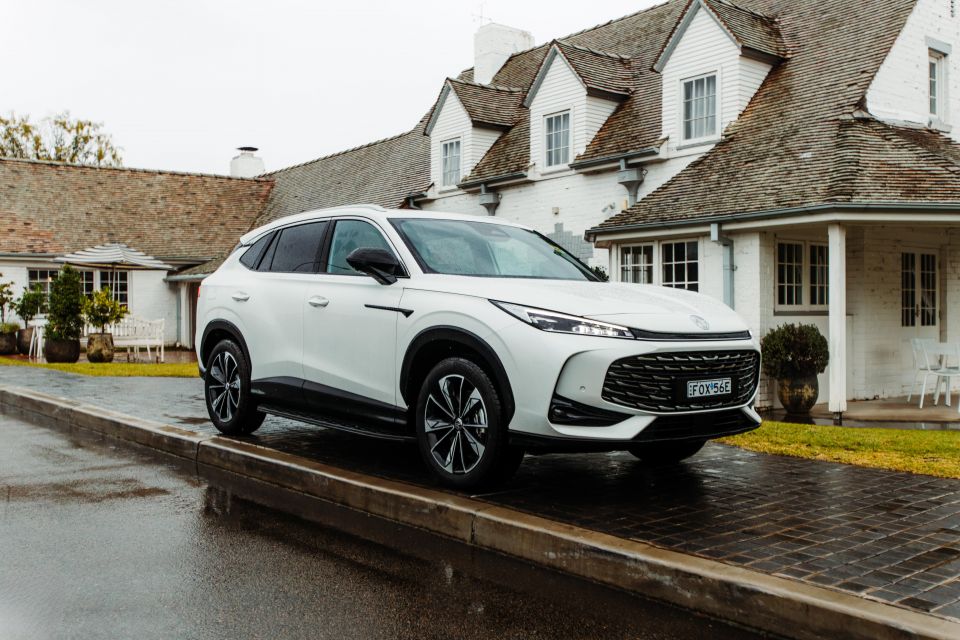
While we don’t know anything about its price positioning or local specification at the moment, the MG HS Super Hybrid is an incredibly efficient mid-size SUV with hypermiler range between fills and charges, which drives well to boot.
Even better, it looks and feels just like a regular HS, which is already an impressive and strong value offering in its own right at the base level. If the HS was already arguably the pick of MG Australia’s lineup, this new Super Hybrid could prove to be the best of the bunch should the Chinese brand get the price right.
With a smooth, seamless and refined drivetrain, mature on-road manners and decent, if not exemplary, handling characteristics, the MG HS Super Hybrid could be an excellent alternative to regular hybrid offerings from the usual suspects like Toyota, Hyundai and Kia.
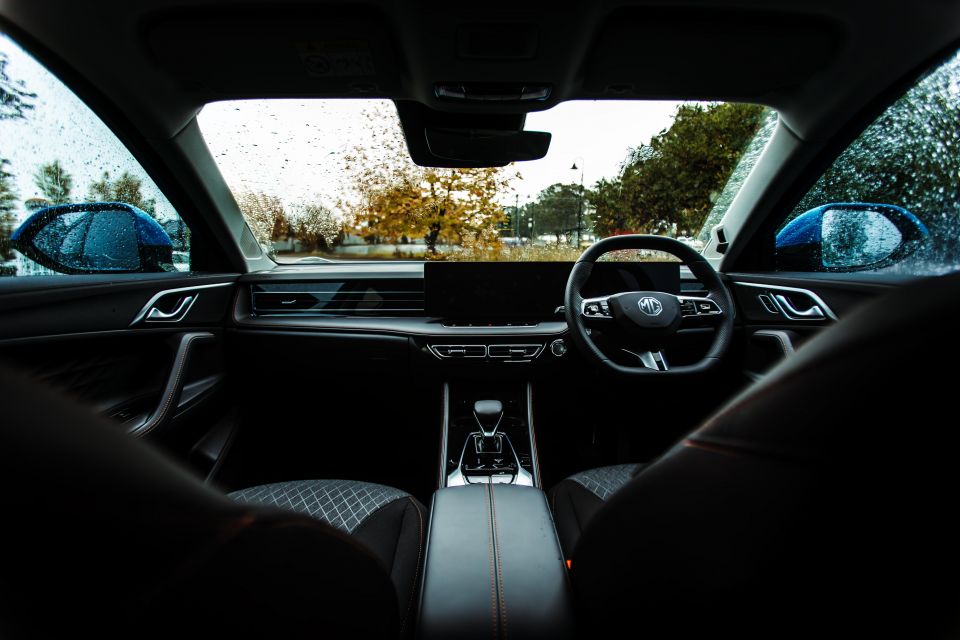
PHEV sales continue to grow in Australia as more options arrive on our shores and, while the federal government’s tax incentives may have vanished for plug-in hybrids, there’s still a strong case to be made for this type of vehicle should it fit a consumer’s individual lifestyle needs.
You could theoretically drive this HS for weeks without using fuel, and keep the battery juiced by plugging it into a conventional wall socket for around 10 hours overnight. When you need it, the petrol engine can take you further, and the clever hybrid system will keep fuel use to a similar level to that of conventional hybrids too.
Should pricing land where we expect it to, the HS Super Hybrid will offer better electric-only and combined range than the BYD Sealion 6, while still being substantially cheaper than the Mitsubishi Outlander PHEV. Throw in that 10-year warranty, roadside assistance and capped-price service program, and MG could be onto a winner.
For now, we’ll need to sit tight and wait for final pricing and specifications before we make a call on its value proposition, and then we’ll need to drive final production-spec vehicles in September to see if any improvements are made to the drivetrain.
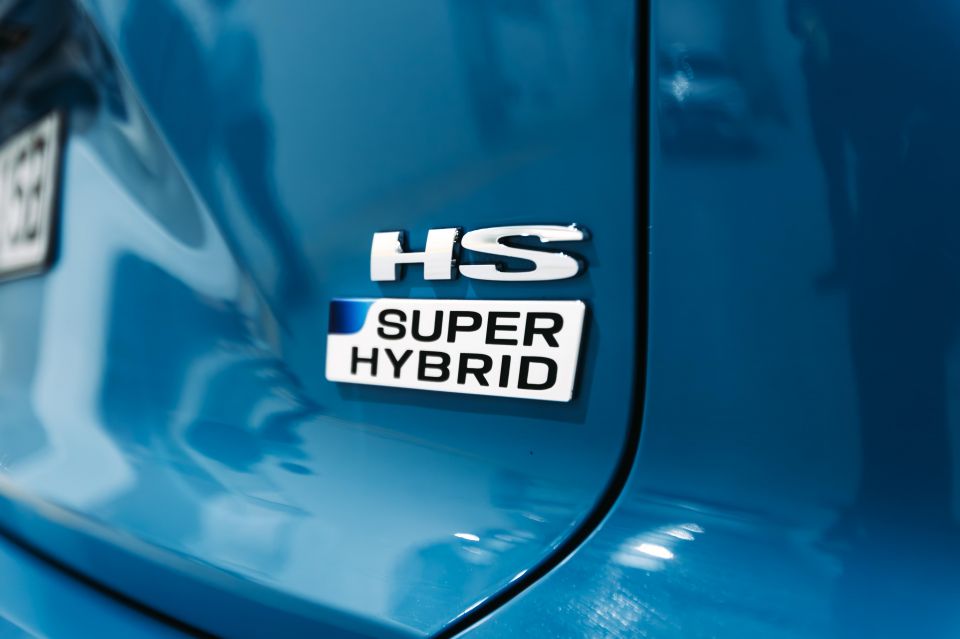
Interested in buying an MG HS? Get in touch with one of CarExpert’s trusted dealers here
Click the images for the full gallery
MORE: Everything MG HS
Where expert car reviews meet expert car buying – CarExpert gives you trusted advice, personalised service and real savings on your next new car.
James Wong is an automotive journalist and former PR consultant, recognised among Australia’s most prolific motoring writers.


Damion Smy
1 Day Ago
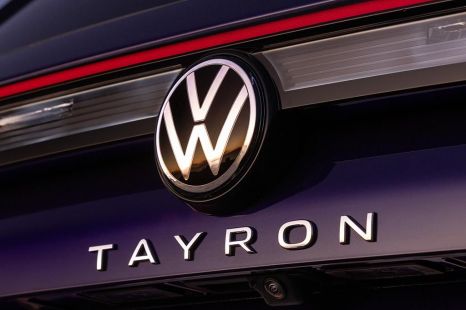

Damion Smy
1 Day Ago
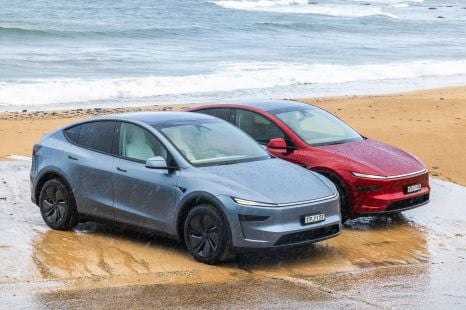

William Stopford
6 Days Ago
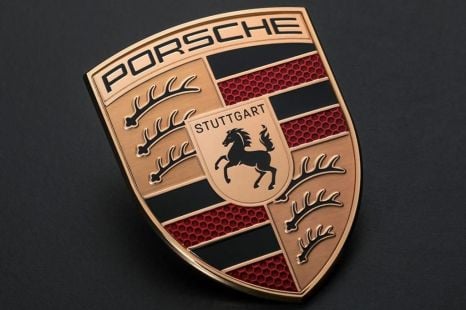

Damion Smy
7 Days Ago
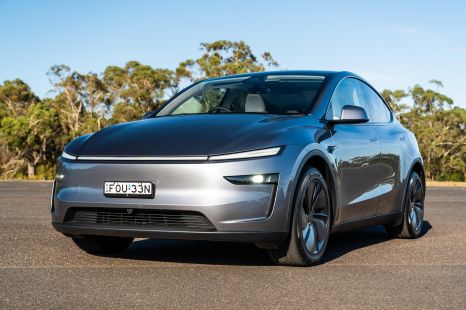

CarExpert.com.au
7 Days Ago
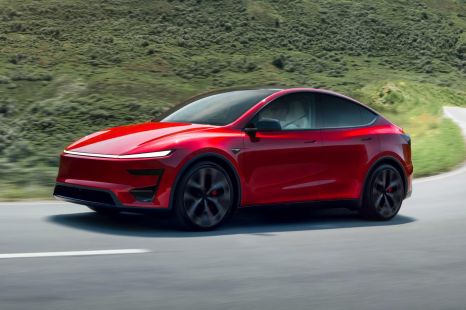

Damion Smy
7 Days Ago